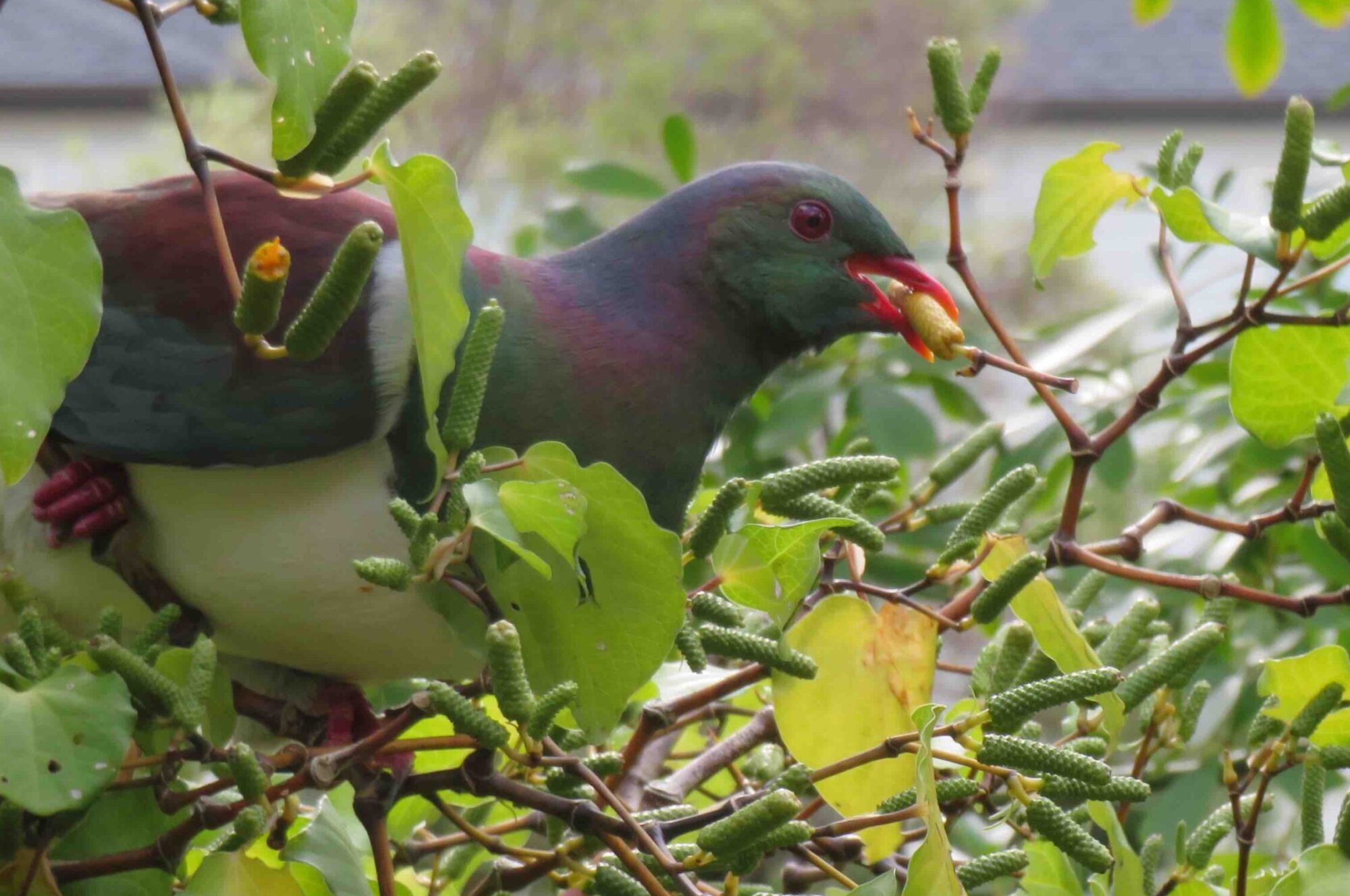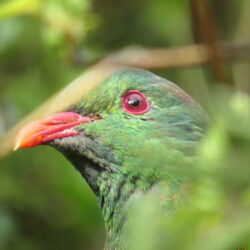Thorough and accurate plant identification is essential to restoration, as it makes weed control efficient and longlasting, and enables spontaneous wild regeneration.
More info coming soon…in the meantime, get down, look low as well as high, and remember that trees start small…
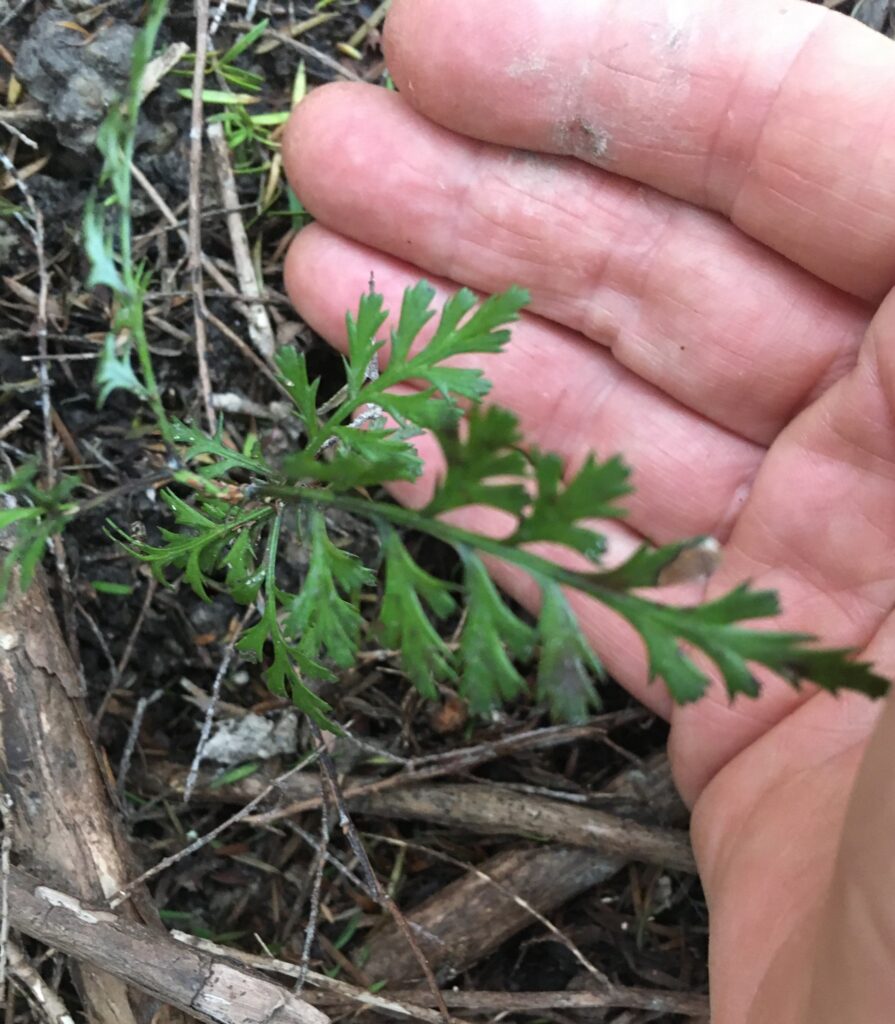
Native trees, shrubs, vines, ground covers, grasses and mosses, even future forest giants such as this tanekaha seedling, arise wild in our gardens every year, usually unrecognised
Nikau seedlings in wet muddy ground
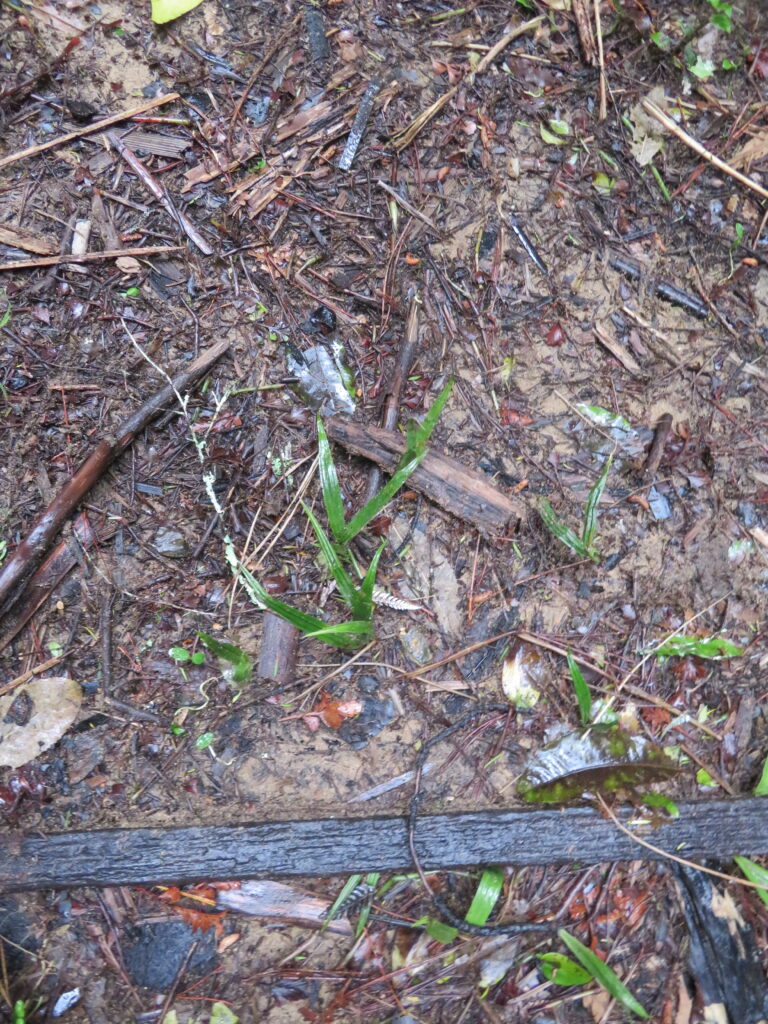
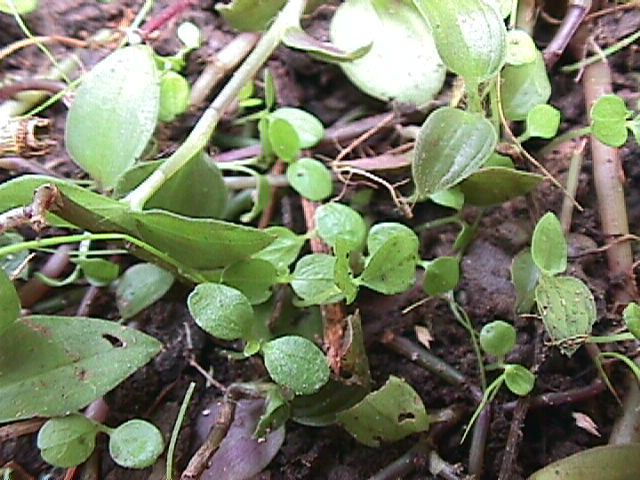
Mahoe seedlings among remnants of Tradescantia
A wild karo seedling and totara seedling…which tree will grow faster or larger?
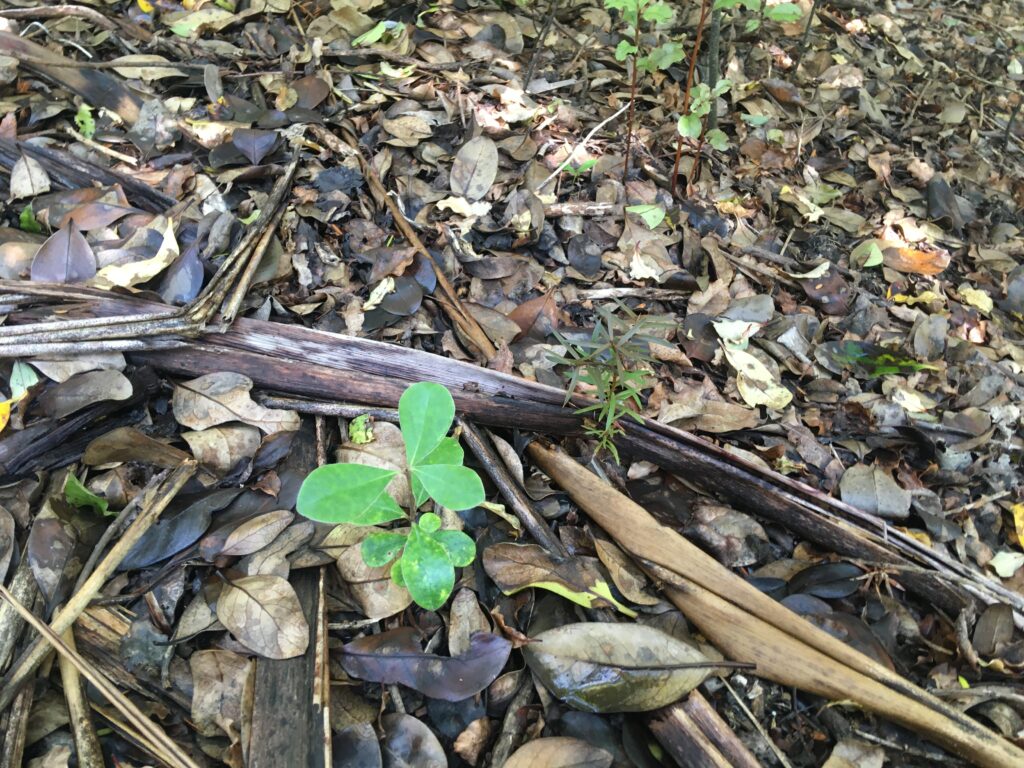
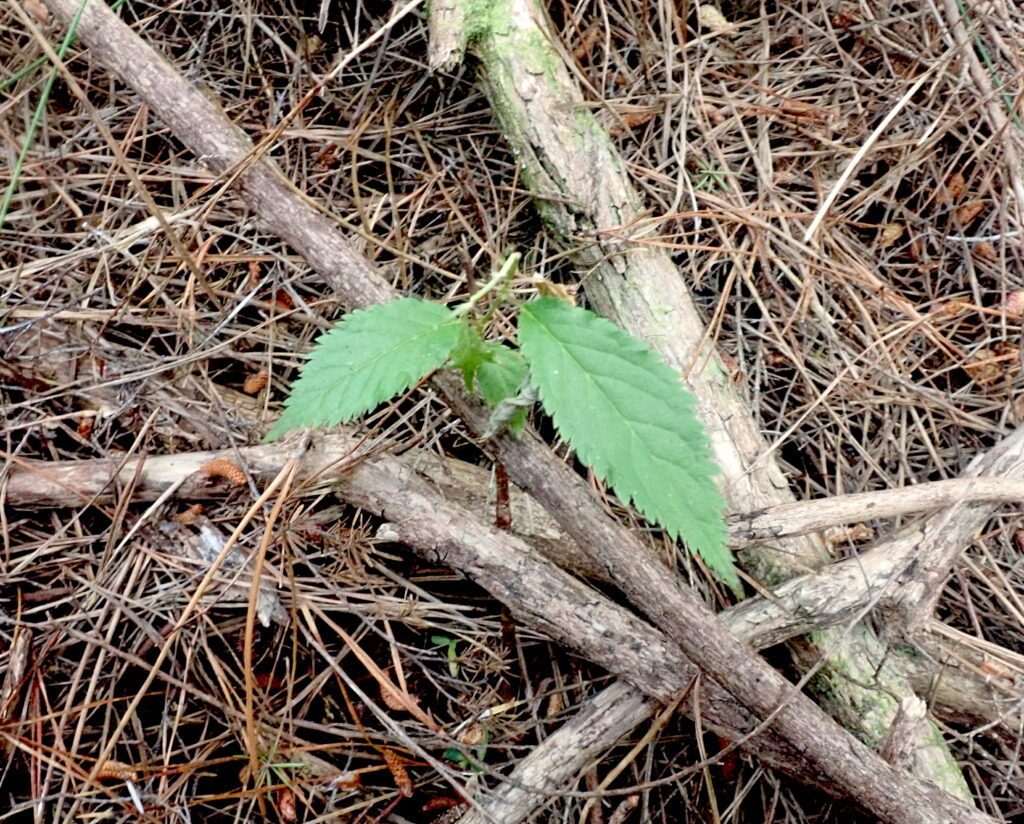
Wild cherry seedling, a common invasive in Eskdale Forest
Twining round this young karamu is Calystegia (bindweed)…probably the commonest species of bindweed in this area, the hybrid Calystegia silvatica (introduced) with Calystegia sepium subspecies roseata (native).
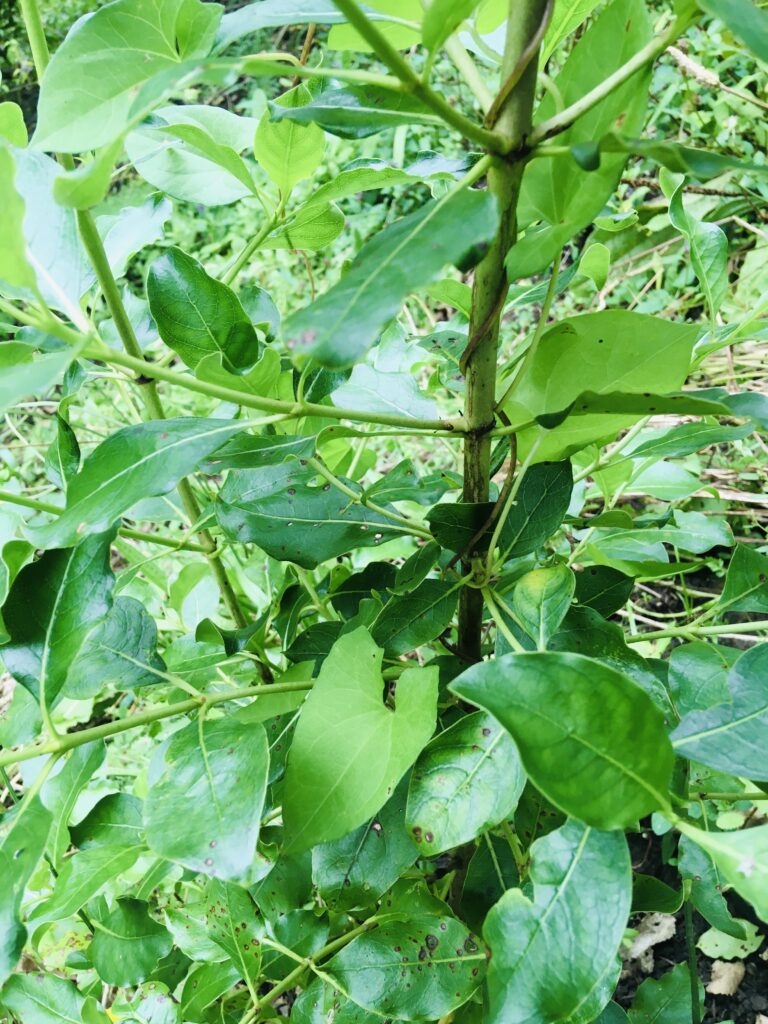
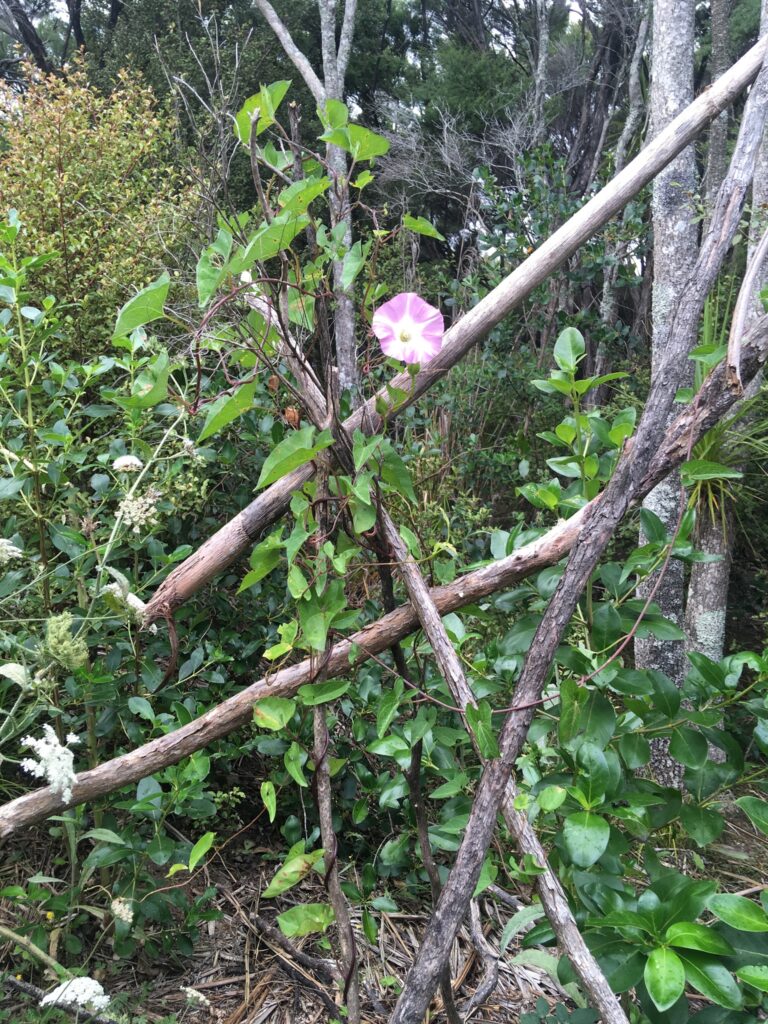
However, it could be pure native C. Sepium, as a large mass of the pure native was found less than 200m away, almost certainly a wild occurrence but covering a raingarden planting.
A cutting was taken from the native occurrence (shortly before it was destroyed in a weed control operation) and planted…seen flowering here the following year.
kawakawa seedling

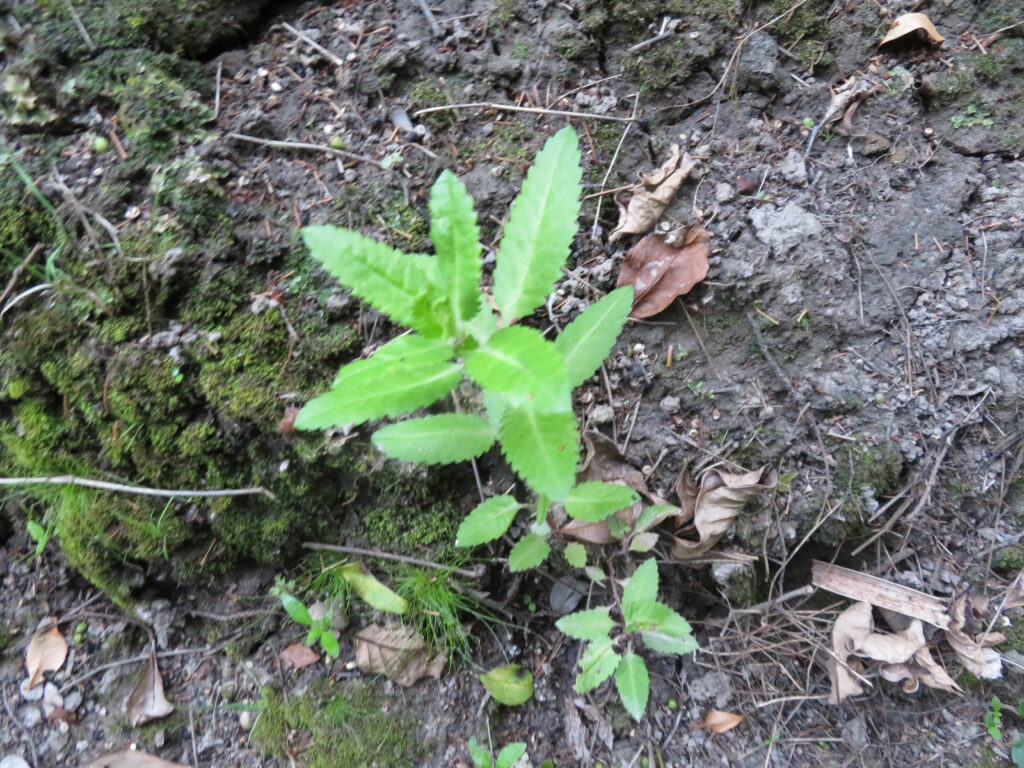
Shrubby toatoa seedling, showing its strength as a pioneer in bare sunlit ground. If allowed to grow, even here in poor, compacted soil beside a walkway, it will become a leafy shrub about a metre high, sheltering other native seedlings, and spreading its own seed over the surrounding bare bank. A short-lived native plant beloved of restorationists.
Flower of kotukutuku, Fuchsia excorticata, NZ Tree fuchsia, on an old tree that has hung over the Kaipatiki Stream in Glenfield for several decades
Photo credit: Jacqui Geuz, “jacqui_nz” at inaturalist.nz
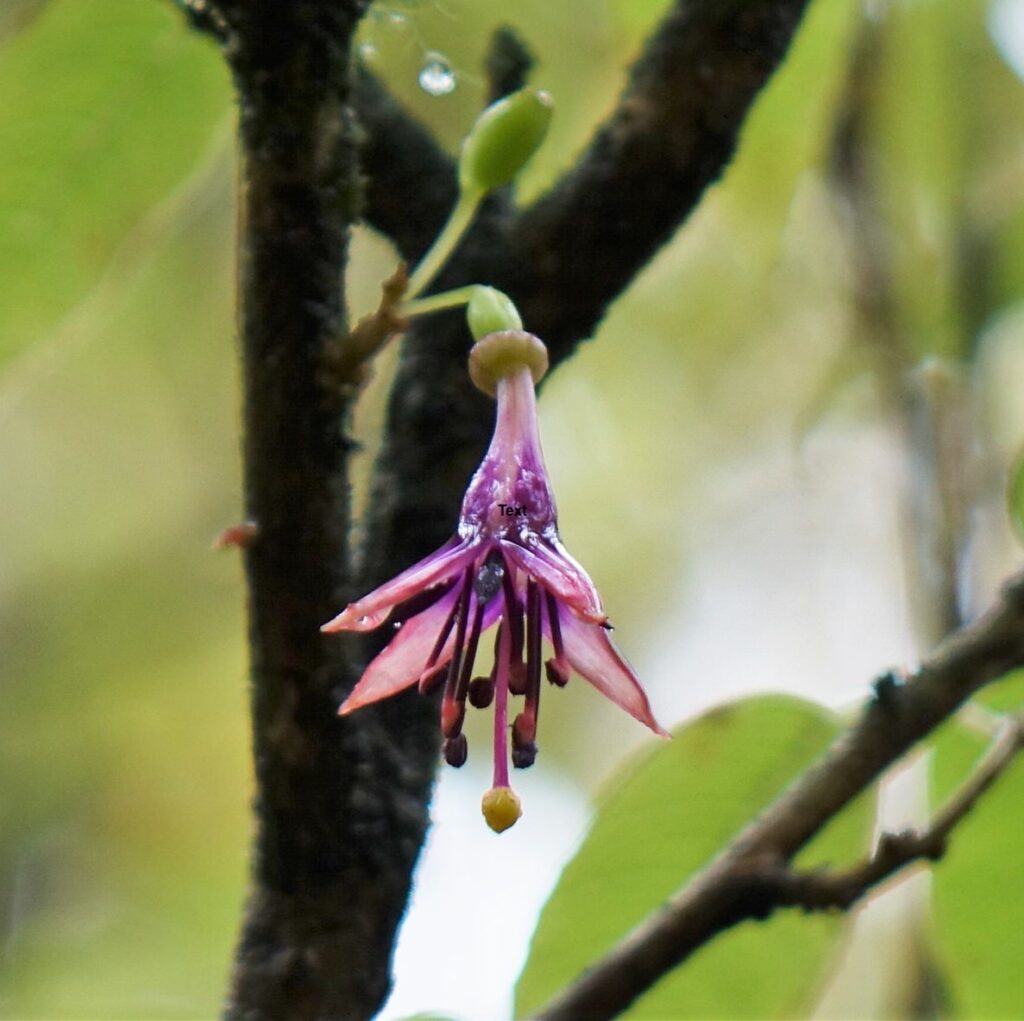
Below: This young wild karamu (left, glossy leaves) has a Broad-leaved plantain for a close neighbour. We have found that plantain do not interfere with the development of juvenile karamu this size, and the plantain’s ground cover retains moisture for the karamu in drought. The plantain’s fine fibrous roots make it easy to uproot later if more space is needed for developing natives.

Also in the above picture are a rough shelter fence of sticks and dry harakeke, the common invasive Verbena incompta, creeping buttercup, the native bindweed (pinkish stems) Calystegia sepium roseata, and (on the right) shrubby toatoa, the wonderfully profilic and quick growing pioneer of native revegetation. The karamu is mulched (foreground left) with dead ox-tongue, which was allowed to grow to maturity before natives were ready to fill the space.
